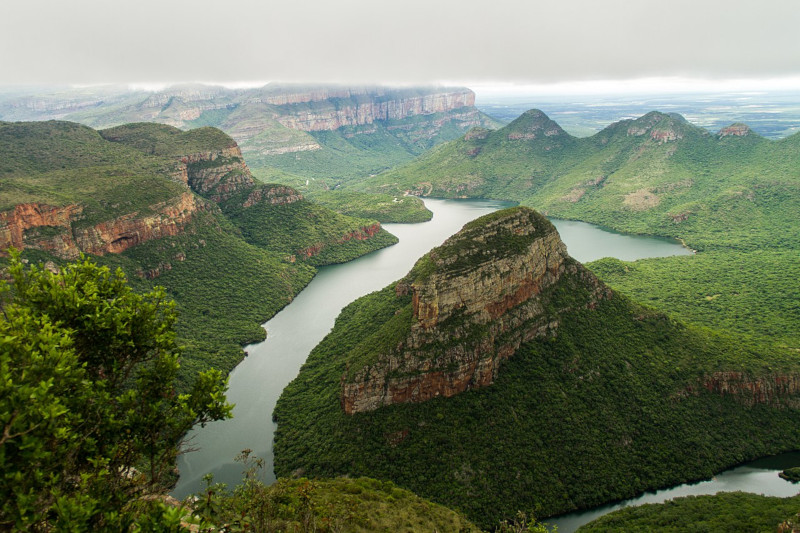
Blyde River Canyon Facts
- To the surprise of some, the truly stunning Blyde River Canyon stands out from other such features throughout the world for several reasons. These reasons, however, involve a wide variety of factors. Admittedly, though, some of them concern perspectives.
- Perhaps chief among these reasons remains the fact that the site ranks as one of the largest known canyons in the world. This remarkable location additionally represents one of the largest examples of a specific type of canyon, known as a green canyon.
- The inhabitants of the continent it formed on further consider it to be one of the great natural wonders of that region of the globe. Its somewhat distinctive name only further serves to distinguish this geological marvel from other similar features.
- This particular moniker derives from those explorers who first encountered it. That’s due to a Dutch expedition that took place during the early portion of the 18th century. In that language, the word Blyde translates as either happy or glad.
- Impressively, this site also serves as the cornerstone of the Blyde River Canyon Nature Reserve. The canyon further serves as home to a wide variety of flora and fauna. Quite understandably, the location now constitutes and extremely popular tourist site.
Related Articles
Hells Canyon
Blyde River Canyon Physical Description
Likely the most notable thing about the truly magnificent Blyde River Canyon remains its sheer physical size. That holds true due to a truly impressive measurement. More precisely, this masterpiece of Nature stretches for an overall length of roughly 3.1 mi (50 km).
The feature also boasts a maximum measured depth of about 2,625 ft (800 m). Its overall physical measurements, however, do not represent its only claim to magnificence. That’s because, among other things, it also possesses some truly incredible cliffs.
In point of fact, these form some of the highest and most precipitous such features found in any canyon on the entire planet. The visually breathtaking Blyde River Canyon actually represents one wonder of Nature that contains many other natural surprises, as well.
That’s true since the gorgeous canyon also plays host to numerous natural marvels bearing their own share of distinctive names. These also represent many distinct types of natural features. Such formations include such wonders as the Kadishi Tufa Waterfalls.
These additionally rank as the second highest of their kind in the world. They include features bearing such intriguing names as The Pinnacle, God’s Window, Bourke’s Luck Potholes, the Three Rondavels, and the Echo Caves. Each forms a different type of feature.
Blyde River Canyon Location, Formation, and Life
The awesome wonder of Nature currently known as the Blyde River Canyon formed in what now constitutes the country of South Africa, on the continent of Africa. More specifically, the site lies within the boundaries of the province of Mpumalanga.
This location, itself appealing, sits in the eastern portion of the country. There, the fabulous canyon originally formed as part of the ancient super continent known as Gondwanaland. This gigantic formation eventually broke apart around 200 million years ago.
Subsequent to this, what had previously been a very deep undersea trench actually, over time, of course, became the canyon we see today. Today, though, the beautiful and incredible location possesses a remarkably lush environment within its boundaries.
As a result, it serves as home to numerous species of mammals, birds, and fish. Some of these species are rarely ever seen, thus it serves as a haven for these and other species. Their presence only serves to enhance the majesty of the location to even greater degrees.
The mammals found within its boundaries include the Vervet Monkey. But the great majority of creatures found here consists of birds, including the amazing Crowned Eagle. Amazingly, reptilian species such as the crocodile also appear here in relatively large numbers.
Features Sharing Its Region
Check out our other articles on 7 Bizarre Ocean Invertebrates, Achrioptera manga, Lagoa do Fogo, Harpy Eagle, Mongolian Wild Horse, Weedy Seadragon, Himalayan Blue Poppy, Weka
